Latest Contributions
Read More Contributions
Nostalgia for Indian Railway Journeys – 1960’s – Early 1970’s
Category:
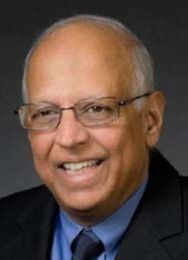
Krishnan K. Sankaran studied metallurgical engineering at the Regional Engineering College, Durgapur, IIT Madras, and Massachusetts Institute of Technology, from where he received his Ph.D. degree in 1978. In 2012 he was elected as Honorary Member of the Indian Institute of Metals for his distinguished services and significant contributions to the metallurgical profession and research. He retired in 2014 after working for 36 years in the aerospace industry. He recently published a book titled Metallurgy and Design of Alloys with Hierarchical Microstructures (Elsevier, June 2017). He now devotes his time to learning Carnatic music, Sanskrit and Hindu scriptures, and to traveling.
My train travel experiences across India in the 1960’s and early 1970’s are etched in my memory.
While major railway routes were being electrified and diesel locomotives were being used increasingly, those were still the glory years of the steam locomotive. The decline and demise of the latter marking the end of a way of life for generations of railway workers is captured very well and powerfully in the National Geographic documentary "The Great Indian Railways"
Modern electric locomotives have increasing accelerating capability and the ability to haul many coaches at high speeds. The YouTube also has many superb videos capturing them hauling high speed trains, the fastest currently being the Gatiman Express that started operating between New Delhi and Agra in 2016 with a maximum speed 160 kmph.
Despite the technological advances and the introduction of the high-speed trains running non-stop between major cities, to me nothing will compare with the journeys during the heydays of the steam locomotives with generally slower trains.
I have traveled extensively by train in India during my childhood, high school and college days. I still remember traveling on the famous trains such as Frontier mail, Flying Ranee, Grand Trunk Express and the relatively slower but still legendary Bombay-Madras Mail, Toofan Express, Howrah-Madras Mail, Bombay-Howrah Mail via Allahabad, to name a few. I can still feel the exhilarating acceleration of the latter, as it departed from Asansol on its nonstop run to Dhanbad, the next stop.
The Indian Bradshaw with the time tables for all the trains operated by the Indian Railways was a treasure to me as it let me imagine and dream of taking all the trains to all the places across India. The trains that I actually traveled in were slow enough and with multiple stops that I could experience travel through many states, languages and the changing geography across India. I was particularly thrilled with identifying the major rives and their tributaries that we crossed, and the mountain ranges and other landmarks we passed by, as I was then learning about them in history and geography lessons at school.
I still remember the 1963 trip from Kadayam, a small town in Tirunelveli District in Tamil Nadu to Alwaye (presently Aluva) in Kerala. We were looking for the best and shortest way to travel, for which I perused the Southern Railway Time Table to come up with the not so obvious route shown in the four tables. The route is shown in the following Google map link.
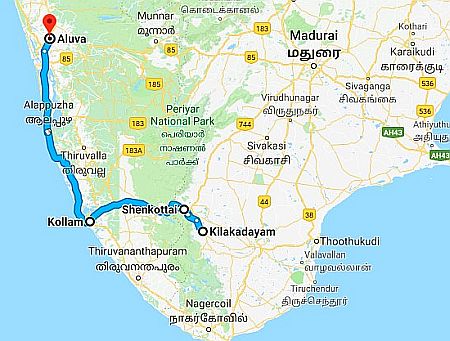
We would have normally taken the circuitous but more obvious route shown in the link http://bit.ly/2zV4ajn
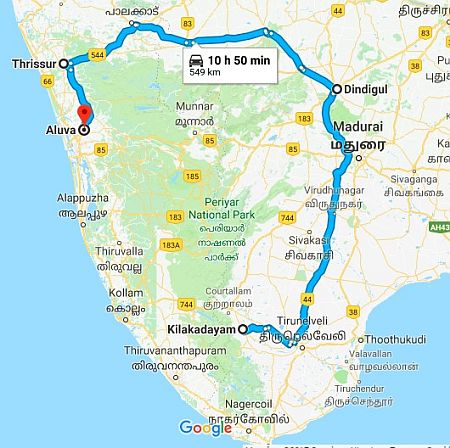
This journey was memorable in many other ways. The traveling party consisted of my paternal grandparents, maternal grandmother, parents, younger brother and myself. All the trains we traveled in ran on time. We boarded the almost empty train at Kila Kadayam and were treated to breathtaking scenery as the train passed through the western ghats. I occupied a window seat and rarely took my eyes off the passing scenery. There was sufficient time at Quilon to wander across the station to see both broad and meter gauge steam locos hauling arriving and departing trains.
I kept awake most of the night journey from Quilon to Alwaye, trying to guess the stations that the train was speeding past.
Our hosts at Alwaye were totally surprised to see us arrive early morning, as the letter from our Bombay friend informing them of our plans was received only later. Still, we were welcomed warmly and provided with all comforts.
We went to Kalady, the birthplace of Adi Sankaracharya, and later that afternoon traveled to Wadakanchery to stay with friends and then on to the famous Krishna temple at Guruvayoor. After a few days at Guruvayoor, we traveled to Palghat, from where we left for Madras, boarding the Mangalore mail at Olavakkod. This was my first visit to Kerala, a beautiful place with great food and people. After a few days at Madras, we left for Bombay arriving in time for the start of both the monsoons and the school year.
These tables are extracted from the 1979 Bradshaw (the train timings were about the same in 1963). Train 163 departing Kila Kadayam at 14:58 arriving Quilon (presently Kollam) at 20:20 (Tables 1 and 2) and Train 47 departing Quilon at 22:35 arriving Alwaye at 03:45 (Tables 3 and 4). Train 163 took us through one of the most beautiful scenic journeys through the western ghats.
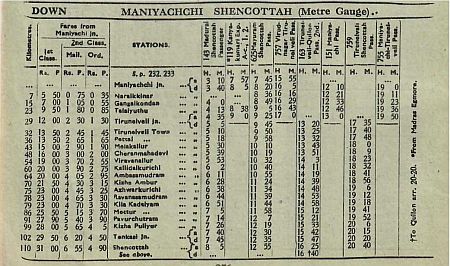
Table 1: Train timings from Maniyachi to Shencottah, showing Train 163 Tirunelveli - Quilon passenger departing Kila Kadayam at 14:58 and arriving in Shencottah at 16:25. 1979 Bradshaw.
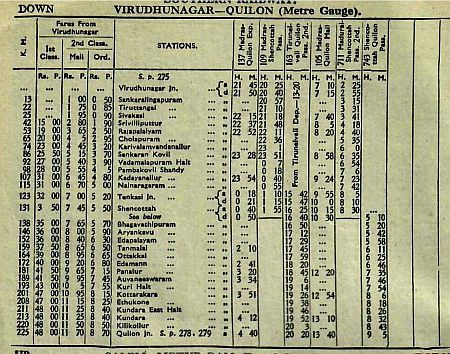
Table 2: Train timings from Virudhunagar to Quilon, showing Train 163 Tirunelveli - Quilon passenger departing Shencottah at 16:40 and arriving in Quilon at 20:20. 1979 Bradshaw.
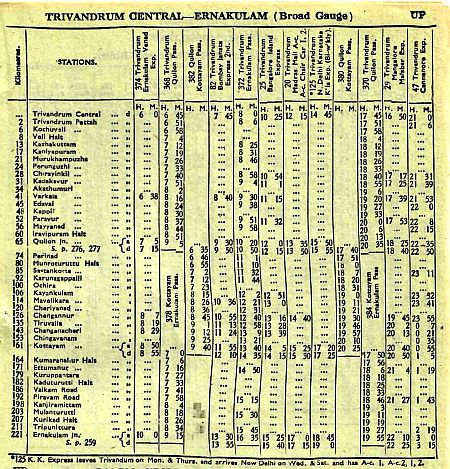
Table 3: Train timings from Trivandrum Central to Ernakulam, showing Train 47 Trivandrum - Cannanore Express departing Quilon at 22:50 and arriving in Ernakulam at 3:00. 1979 Bradshaw.
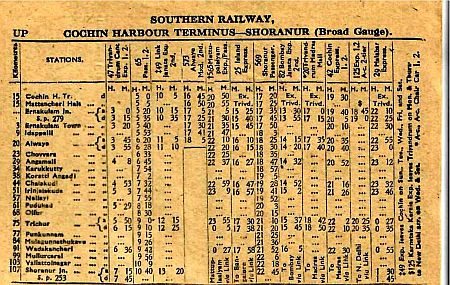
Table 4: Train timings from Cochin Harbour Terminus to Shoranur, showing 47 Trivandrum - Cannanore Express departing Ernakulam at 3:15 and arriving in Alwaye at 3:45. 1979 Bradshaw.
Sites such as https://etrain.info/in currently provide the railway time tables and the ability and convenience for instant inquiry about reservations, running status of trains, etc. Too bad that Bradshaws are not available anymore. I still peruse the 1979 Bradshaw, which takes me back to all the journeys I took while in high school and college. The fond memories of those train journeys are always fresh in my mind.
______________________________________
© Krishnan Sankaran 2017
Comments
Add new comment